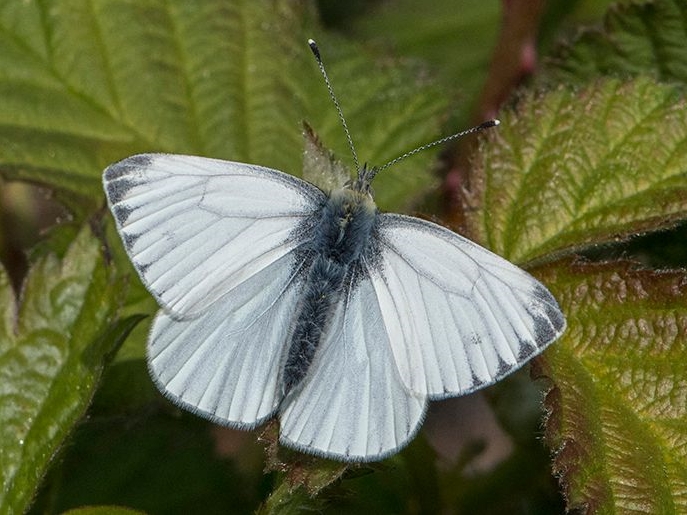
| Butterfly Conservation |
 |
| Hertfordshire & Middlesex Branch |
 |
|
|||
| Saving butterflies, moths and our environment | ||||

%20090516_DM_43.jpg)
Green-veined WhitePieris napiWidespread and common resident Distribution and Status This butterfly is very widespread and common in our branch area. Little change in range and abundance since the 1980s although it now appears to be absent in some parts of north-east Hertfordshire. On the other hand, there are more reports in central Middlesex than previously. It is not a garden pest and is more associated with wooded and damp areas than the other 'whites' so it is mystery why there is a change in the distribution pattern, albeit slight Habitat Requirements In many habitats but prefers woodland edges, hedgerows and damp meadows. It is much scarcer on dry chalky soils Larval Foodplants Garlic Mustard Alliaria petiolata, Hedge Mustard Sisymbrium officinale, Cuckooflower Cardamine pratensis in first brood, Watercress Nasturtium officinale, Horse Radish Armoracia rusticana, Rape Brassica napus and other Brassicaceae plants Adult Food Sources Buddleia Buddleja davidii, Garden Lavender Lavandula x intermedia, Bramble Rubus fruticosus agg., Creeping Thistle Cirsium arvense, Aubretia Aubretia deltoidea, Dandelion Taraxacum sp. Behaviour/Observation notes The Green-veined White is often seen in the same places in the wider countryside as the Small White although it is more common in the damp and sheltered areas. Its weak and fluttery flight helps to identify this butterfly on the wing to experienced observers but the best way to distinguish the two species is by markings on the wings especially on the undersides where the green veins are characteristic of this species. Pairings of this butterfly are probably more often observed than of the Small White in the wild Life History The Green-veined White overwinters as a pupa and emergence of the adults usually starts in April. The second generation is nearly always greater than the first with the highest numbers often occurring in late July and early August. It has been known that some pupae from the first generation stay in diapause until the following year. Small, fresh plants are selected for egg-laying on the underside of a leaf. Larvae feed on the leaves of the foodplant. When fully-grown pupae are formed generally away from the foodplant close to the ground Further information
UK distribution map |
Copyright Butterfly Conservation © 2019 Hertfordshire & Middlesex Branch
Privacy and Copyright Statement and Cookie Policy Statement
Butterfly Conservation
Company limited by guarantee, registered in England (2206468)
Registered Office: Manor Yard, East Lulworth, Wareham, Dorset, BH20 5QP. Tel: 01929 400 209
Charity registered in England & Wales (254937) and in Scotland (SCO39268). VAT No. GB 991 2771 89